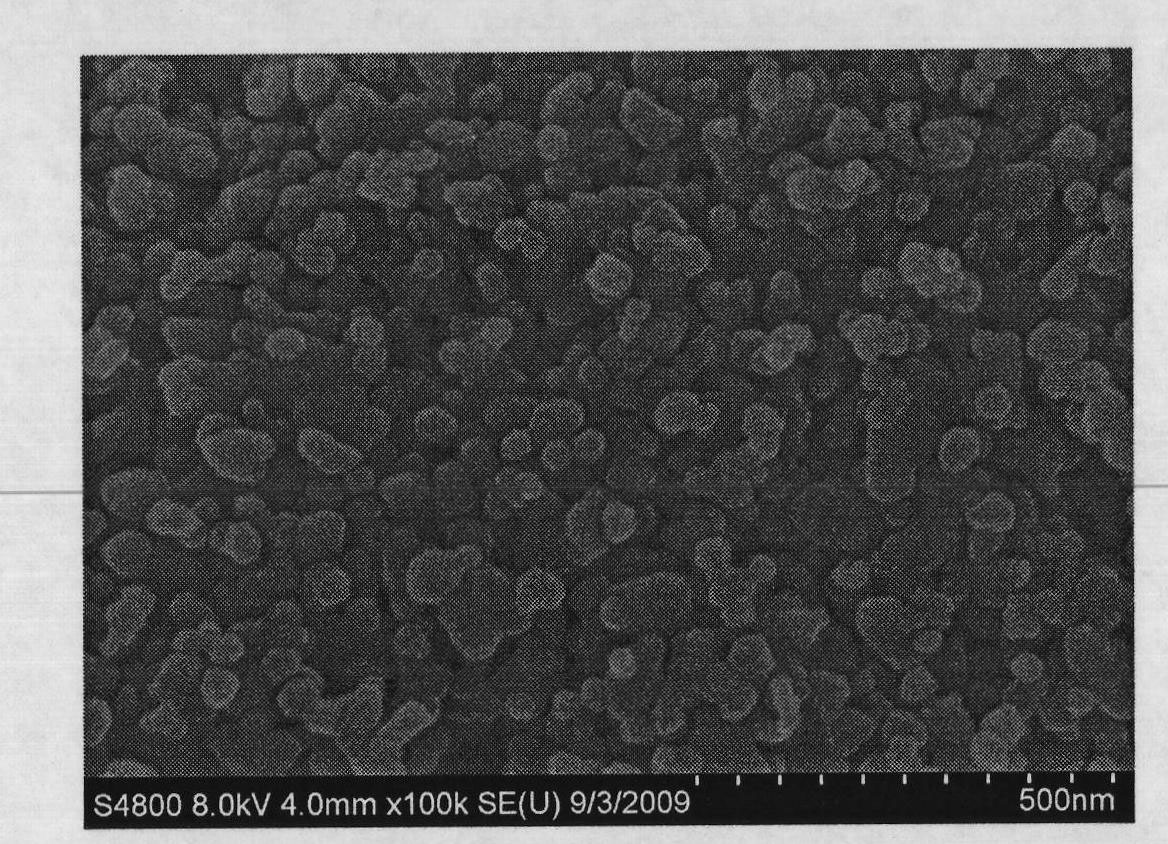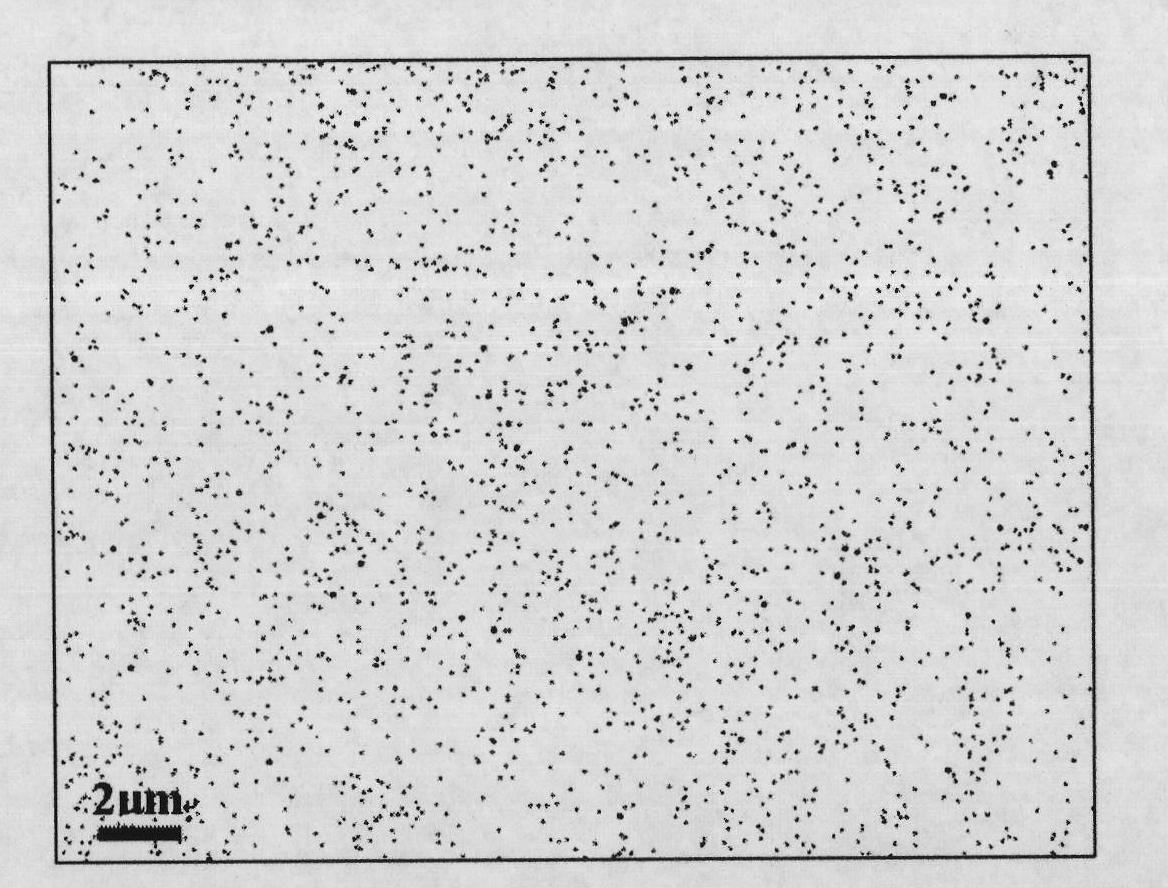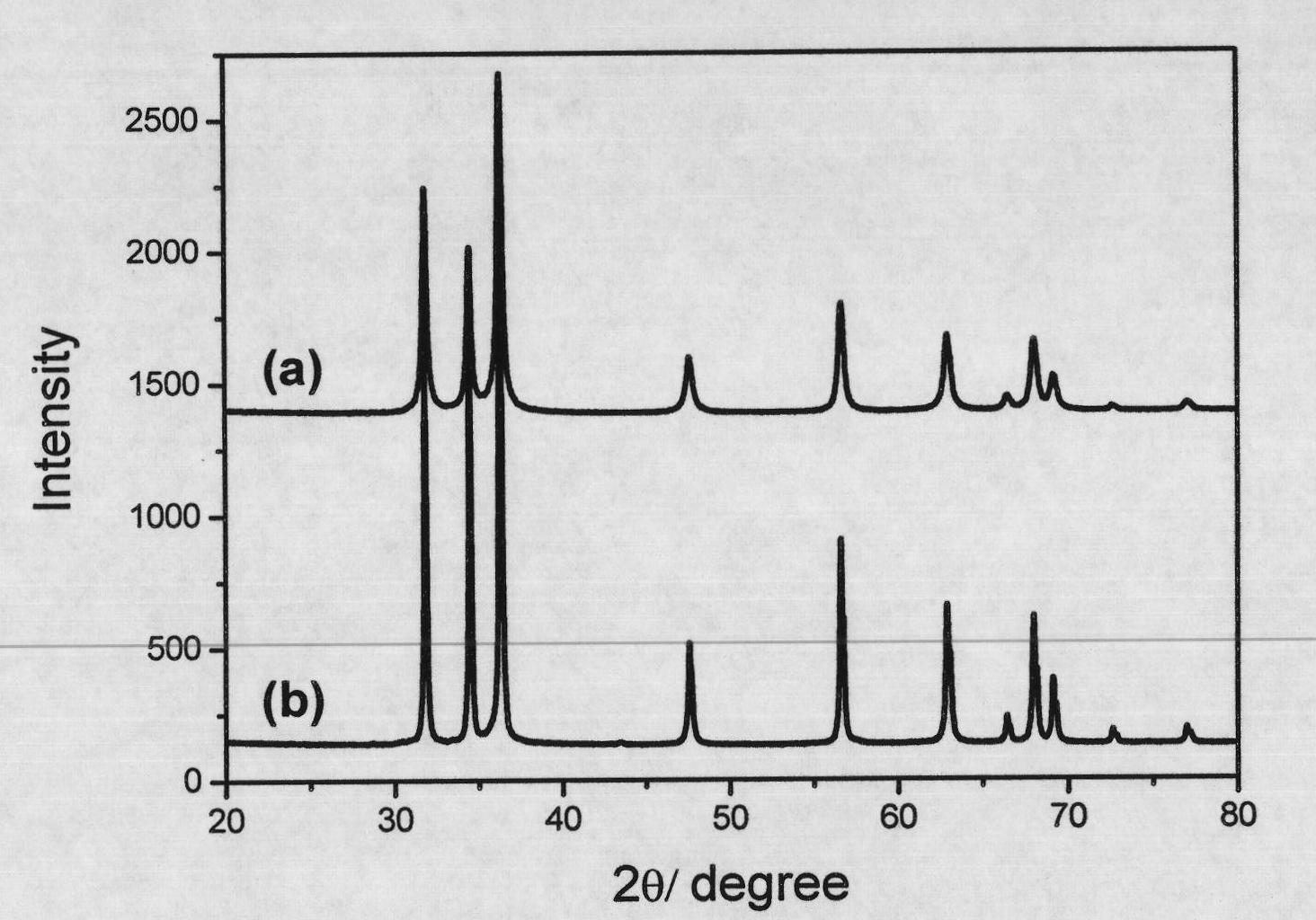Preparation method of doped zinc oxide nano powder
A zinc oxide nano-powder technology, which is applied in the field of preparation of doped zinc oxide nano-powder, can solve the problems of non-conductivity, high impurity content, uneven distribution of doped zinc oxide powder, etc., and achieve uniform distribution and high purity. high effect
- Summary
- Abstract
- Description
- Claims
- Application Information
AI Technical Summary
Problems solved by technology
Method used
Image
Examples
Embodiment 1
[0037] Dissolve aluminum nitrate and zinc nitrate together in deionized water to form a salt solution with a total salt concentration of 1 mol / L, wherein the molar ratio between aluminum ions and zinc ions is 0.032:1, under strong stirring at a speed of 600 rpm Evenly add dropwise to 3mol / L ammonia solution (solvent is deionized water) at a rate of 20mL / min, keep the pH value of the system at 7.5±0.5 and the temperature at 30°C during the dropwise addition process, and obtain the co-precipitated product; After aging the co-precipitated product for 24 hours, the precipitate was washed three times with deionized water and once with absolute ethanol, and then dried in an oven at 100°C for 10 hours to obtain a dry white product; the white product was dried at 600°C Calcining at lower temperature for 2 hours, the aluminum-doped zinc oxide nanopowder was obtained, wherein the molar ratio between aluminum ions and zinc ions was 0.032:1.
[0038] After testing, the SEM photo of the ab...
Embodiment 2
[0041] Dissolve aluminum nitrate and zinc nitrate together in deionized water to form a salt solution with a total salt concentration of 0.5 mol / L, wherein the molar ratio between aluminum ions and zinc ions is 0.032:1, and the At a speed of 5mL / min, it was evenly added dropwise to 2mol / L ammonia solution (the solvent was deionized water), and the pH value of the system was kept at 8.3±0.3 during the dropwise addition process, and the temperature was 20°C to obtain the coprecipitated product ; After the co-precipitated product was aged for 24h, the precipitate was washed 4 times with deionized water, then washed 2 times with absolute ethanol, and then dried in an oven at 100°C for 10h to obtain a dry white product; the white product was dried at 500°C Calcining at high temperature for 2 hours to obtain aluminum-doped zinc oxide nanopowder, wherein the molar ratio between aluminum ions and zinc ions is 0.032:1.
[0042] After testing, it can be seen from the SEM photos, EDS spe...
Embodiment 3
[0044] Dissolve aluminum nitrate and zinc nitrate together in deionized water to form a salt solution with a total salt concentration of 3 mol / L, wherein the molar ratio between aluminum ions and zinc ions is 0.02:1, under strong stirring at a speed of 400 rpm Add it dropwise evenly at a rate of 50mL / min to a 5mol / L ammonia solution (the solvent is deionized water), keep the pH of the system at 9.6±0.4 during the dropwise addition, and keep the temperature at 50°C to obtain a co-precipitated product; After aging the co-precipitated product for 30 hours, the precipitate was washed 5 times with deionized water, then washed 2 times with absolute ethanol, and then dried in an oven at 100°C for 15 hours to obtain a dry white product; the white product was dried at 700°C Calcining at lower temperature for 3 hours to obtain aluminum-doped zinc oxide nanopowder, wherein the molar ratio between aluminum ions and zinc ions is 0.02:1.
[0045] After testing, it can be seen from the SEM p...
PUM
| Property | Measurement | Unit |
|---|---|---|
| Particle size | aaaaa | aaaaa |
| Particle size | aaaaa | aaaaa |
| Particle size | aaaaa | aaaaa |
Abstract
Description
Claims
Application Information
 Login to View More
Login to View More - R&D
- Intellectual Property
- Life Sciences
- Materials
- Tech Scout
- Unparalleled Data Quality
- Higher Quality Content
- 60% Fewer Hallucinations
Browse by: Latest US Patents, China's latest patents, Technical Efficacy Thesaurus, Application Domain, Technology Topic, Popular Technical Reports.
© 2025 PatSnap. All rights reserved.Legal|Privacy policy|Modern Slavery Act Transparency Statement|Sitemap|About US| Contact US: help@patsnap.com



